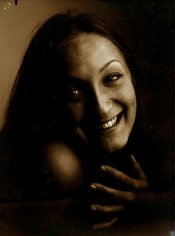medform-norm
Member
Hi y'all,
we wondered if anyone has experience with obtaining negative prints made by exposing a piece of photographic paper inside a camera and then developing it as usual.
What we're planning on doing is to load a sheet of 8x10" in a Lisco holder, expose it according to the sensitivity of the paper (you'll need to find this out), develop as usual.
Not having done this before extensively other than crude experiments on photographic paper loaded in a pinhole camera, we wondered if we might draw on the knowledge and experience amassed here.
We assume you'd need to use a paper with a very fine grain for best results. Can anyone recommend such a paper?
Will the paper stay as flat in the holder as sheet film?
If anyone has done this process before, what are your experience with regards to obtaining a good tonality? Does it require special development techniques?
Thanks for sharing your thoughts on this.
Cheers,
norm
we wondered if anyone has experience with obtaining negative prints made by exposing a piece of photographic paper inside a camera and then developing it as usual.
What we're planning on doing is to load a sheet of 8x10" in a Lisco holder, expose it according to the sensitivity of the paper (you'll need to find this out), develop as usual.
Not having done this before extensively other than crude experiments on photographic paper loaded in a pinhole camera, we wondered if we might draw on the knowledge and experience amassed here.
We assume you'd need to use a paper with a very fine grain for best results. Can anyone recommend such a paper?
Will the paper stay as flat in the holder as sheet film?
If anyone has done this process before, what are your experience with regards to obtaining a good tonality? Does it require special development techniques?
Thanks for sharing your thoughts on this.
Cheers,
norm





 What was your motivation to try this?
What was your motivation to try this?


